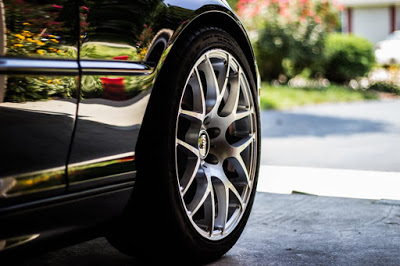 One of the most common car checks that you should constantly be on top of is monitoring the tyre pressure. This is a hugely important aspect of your car that you should check on a regular basis. Remember, as well as monitoring the pressure as part of your standard series of checks, you should also keep track of it before any long journey and bear in mind that you will need to adjust it depending on how much weight you are carrying in the car on each specific journey.
One of the most common car checks that you should constantly be on top of is monitoring the tyre pressure. This is a hugely important aspect of your car that you should check on a regular basis. Remember, as well as monitoring the pressure as part of your standard series of checks, you should also keep track of it before any long journey and bear in mind that you will need to adjust it depending on how much weight you are carrying in the car on each specific journey.
Fuel Consumption
Low tyre pressure can cause your car to use much more fuel than it needs to. Even a car that is underinflated by just 15 psi leads to 6 per cent greater fuel consumption. This amounts to £150 on every £2500 spent at the fuel pump. Without regular checks, there is no way of knowing this and you will find yourself heading to the petrol station an unnecessary number of times. There are plenty of tyre pressure monitoring systems out there so you can keep track of your car’s pressure from your own home rather than having to head out of the house every time.
If you drive a larger vehicle or run a business that involves you covering a lot of miles, you can make huge savings by making sure your tyres are kept pumped up to the right level.
Tyre Damage
Even if you don’t take the obvious fuel economy argument into account, there is another vital point to be made. Driving a car that has underinflated tyres can lead to damage over time. As well as this, tyres that are underinflated are more likely to burst as they overheat more quickly. The cost of replacing these tyres can be significant. Not only this, it can be very dangerous as you have less control of your vehicle as the handling is significantly affected and important functions like braking can also be significantly impaired.
Also problematic are overinflated tyres, which can give a bumpier and more uncomfortable ride. The surface of the tyre will be in less contact with the road which can reduce grip and is especially dangerous in bad weather.
How To Check
The correct tyre pressure will most likely be found in your owner’s manual or inside your petrol hub. When you check your tyres, they should be as cool as possible. Try not to do this after a long journey as this can affect the reading. If you have your own monitoring system, it makes it easy to check at any time. It is recommended that you check at least once a month, though this should be done more regularly if you are driving on a frequent basis.
Ultimately, checking the pressure of your tyres may seem like one of those irritating little tasks that is is easy to put off, but you will find yourself driving a car that handles much better, one that needs to be filled up less often and one that is much safer in general.

